(New Instrument of Threes)
- page eighteen -
(The Study of Threes)
http://threesology.org
In presenting a "New Instrument of Threes" (Novum Organum Threesiarum), it is of need to traverse many fields of inquiry in an attempt to unravel the way of thinking which makes the "threes phenomena" more amiable to an analysis when present "Empirical Methods" seem to get in the way because in using them; one is inclined, one is predisposed, one is forced, towards a predetermined route of examination as if we were dealing with a conventional syllogistic puzzle.
Whereas the recurring "three" formula in a growing list of patterns-of-three might suggest some underlying and overall syllogistic formula with respect to human perception, if not consciousness and/or "subterranean" (atomic, molecular, etc.) features; such an inclination may be wholly inappropriate or even totally wrong. Since syllogistic patterns are described as logic and logic is afforded some insurmountable and inviolable permanence of truth that Godel has warned humanity about; the usage of any known syllogistic formulation may be a hindrance.
Cardboard "jigsaw" puzzles are generally dumped out of a box onto a table (or clearly defined puzzle "board" so that the table remains free for other uses), and many begin the task by adopting a strategy of putting together all the edge pieces first. Initially, we may try our hand at putting together pieces by the shapes or implied images on the surface. When or attempts seem to turn into dead-ends, we may then resort to looking at a picture of the to-be completed puzzle that is attached to the top of the box. While some think this is cheating, it belies the fact that we already have a picture of what the final outcome is to resemble.
The picture on a jigsaw puzzle container is used as a reference while we collate similarities of puzzle pieces according to some color, shape, or affixed outline... and sort them into a separate area within or alongside the puzzle. However, it should be noted that not everyone likes puzzles. Jigsaw puzzles just like the Rubic's Cube puzzle is very frustrating and they are delighted when the Jigsaw puzzled is broken up again and placed back into its box, or the cube is given away... if not thrown away. Some people do not like engaging in behavior which "collates" different bits of information into compilations for a project. While small compilations are manageable, large ones are particularly frustrating for some. Just like gathering information for a term paper, book report, or the contents of an encyclopaedia. Many, if not all of us use variations of this same "collating" strategy, albeit with different variations of compilation. But not only compilation, but our search (or research) methodology may use its own flavor of looking up material by way of an Author, Title, Subject indexing. A similar three-patterned strategy is used when playing checkers or chess, except that we already know where the edges of the to-be internalized "picture" is. The three-item strategy of these games is to move the pieces of the "puzzle" in a horizontal, diagonal, or vertical placement.
I should also include the mention of there being 64 squares on chess and checkers playing boards and that this is the same number of amino acids... as well as the existence of the remark: "That is the 64 dollar question".
- 64 "word" vocabulary in genetics.
- 64 "moods" in logic.
- 64 "Trigrams" in I Ching Philosophy "Trigrams" are actually Bigrams.
- "64 dollar question" (a recurring colloquial expression denoting an unanswered question.)
I make mention of the "64" as a point about correlating different miscellaneous facts. Some readers may or may not be aware of each of these varieties, but it may be of further interest to note that such information in the hands (or rather, heads) of a few will be whizzing and whirring like chess, checker or puzzle pieces via visualized contemplations of where to place them aligned with interpretations regarding the possible existence of an underlying schematic being used as a "natural" formulaic methodology... that is old or newly born— as an extension into human thinking:
- The "64" in genetics pre-dates humanity.
- The "64" Trigrams in the I-Ching can be viewed as ancient human constructs, or viewed as a modern day misinterpretation that imposes a "three" perspective on a "two" (Bigram) formula that is arranged into a three pattern. (Like the zeros and ones of underlying computer language being attached with a three-patterned boolean logic: AND, OR, NOT and derivations of Silly Syllogistic Substitutions.)
- The "64" moods of logic are from ancient Greece.
- 'The "64" dollar question' phrase may be older than when I heard it in the 1970's being expressed by middle-aged men.
But such a thought (and others) would not have arisen without these different miscellaneous facts being brought together in a list. This is the same for a list of threes. Lots of different examples are being brought together but only a very few are being influenced into further considerations because they are taking the information and mentally organizing it into an additional framework. While some are doing this with an inclination towards a religious predisposition, others are organizing it into open-ended questions awaiting more information or a context for a specific application thereof.
In terms of collecting miscellaneous facts and placing them into some sort of repository, there are lots of people gathering information about the specifics of a certain subject, but they don't then correlate these with miscellaneous facts due to some inherent similarity which may have nothing to do with the initial subject of interest. Most people shrug off such a task as being unprofitable in terms of supplying them with an income. For example, I recall (while working part-time at a furniture warehouse to supplement my income), that a previous fellow employee who was attending college, wanted to know how I was going to apply all the collected "threes" information into an activity (instrument) for acquiring money. To him, knowledge was good only if it provided an income. This event occurred about ten years prior to my having the "threes poster" printed up.
You can see images of the poster here: 3's interest page 1
Whereas some want to point out differences, such that checkers and chess are "contests of skill", such people haven't been around those who take their efforts of "puzzling" very seriously. Even amongst those who are working together in a friendly manner to put a single puzzle together, there is "silent" forms of competition to see who can find a particular piece or section first. There is competition, but it is not frequently described as such. For some, when putting a puzzle together by themselves, the "competition" is the task at hand. Like those who want to climb Mount Everest or chart some unknown terrain, there is competition against the elements, terrain, or simply to be the first to accomplish something. Unfortunately, the strategy being used is seldom documented and thus leaves us with guessing if there was an underlying "three" pattern. Sometimes it is simple by being identified by the presence of three explorers.
Many people are not aware of the "threes phenomena" in their lives or around them. While some are aware of them, they do not seek out additional examples in order to be added to an ongoing list. Others that are pursuing additional examples to be added, would probably agree that there are so many that they are aware they overlook many examples. And some of the examples, they would further agree, would no doubt prove to be a valuable asset in their ongoing correlative attempts to discern the answers to one or more questions because a similar example to one they already possess would make the prior possession that more intriguing. For example, many readers are well aware of the Rosetta stone and its three Languages:
Discovered at Rosette (Raschid) Egypt, in 1799, by Pierre Francois-Xavier Bouchards, a French officer of engineers in Napoleon's army, the Rosetta Stone proved the key to deciphering Egyptian hieroglyphs. It was sent to the Institut d'Egypte in Cairo and then taken to London in 1802. It is a black basalt slab measuring about three feet tall and two feet, four inches wide containing three scripts of the same text:
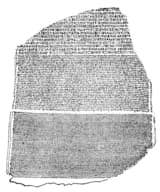
- At the top is Egyptian hieroglyphs (the script of official and religious texts)
- In the middle is Demotic text (everyday Egyptian script).
- On the bottom is Greek.
The (Rosetta) engraving is the record of a 196 B.C. decree by a council of priests in Memphis, Egypt, in which they honored the first anniversary of Ptolemy V, Epiphanes (ca. 203-181 B.C.).
Using a knowledge of the Greek language, French Egyptologist, Jean Francois Champollion, and British physicist, Thomas Young, deciphered the hieroglyphics in 1822. The heretofore “silent” symbols of hieroglyphics sprang to life, unmasking the ancient Egyptian world.
The British Museum describes the Rosetta Stone as a priestly decree affirming the cult of 13-year-old Ptolemy V.
The Rosetta Stone tells of an agreement between Egyptian priests and the pharaoh on March 27, 196 B.C. It names honors bestowed on Macedonian Pharaoh Ptolemy V Epiphanes. After praising the pharaoh for his generosity, it describes the siege of Lycopolis and the king's good deeds for the temple. The text continues with its main purpose: establishing a cult for the king.
The name Rosetta Stone is now applied to just about any type of key used to unlock a mystery. (H.O.B. note: perhaps because it is better known than the Behistun rock.)
H.O.B. note: Aside from the usage of different vernaculars or "jargon" used by authority and the everyday person, was ancient Egypt a tri-lingual culture? Analogously, if all of humanity were to become extinct, would an archaeologist from a different galaxy think that the majority of inhabitants today were multi-lingual if they discovered a cache (stash) of "old text documents" containing several languages... even though we of today take them for granted as multi-lingual instruction or warranty sheets that accompany packaged goods sold in different communities?
Information sources:
Truth Magazine.com archives
(The Rosetta Stone and the Behistun Rock by Joe R. Price)
Engraved on a cliff ledge 345 feet about the ground, the Behistun Inscription stands as a monumental feat of the ancient world. Located at the foot of the Zagros Mountains in western Iran near the modern town of Bisitun, the Behistun Rock was commissioned by King Darius I of Persia (522 - 486 B.C.).
King Darius I of Persia had it cut in the rock at the time of one of his great military victories. It includes a large panel which depicts the scene of his victory, and then three panels underneath with the text. Each panel is in a different language: Old Persian, Akkadian (or Babylonian), and Elamite. (H.O.B. note: The three languages are sometimes given as Old Persian, Assyrian and Susian.)
In the text Darius describes how he established himself as king with the help of the god Ahuramazda by defeating his main rival, Gaumata. Darius had it cut in the rock and then knocked out the ledge which was below the inscription so that it couldn’t be tampered with. This allowed the inscription to survive through the millennia.
The value of the Behistun Rock, in addition to its sheer grandeur and the magnificence of its construction, is its tri-language inscription of a single text. The three different Cuneiform languages appearing on the rock cliff — Old Persian, Akkadian (or Babylonian) and Elamite — rendered the key needed to understand these languages.
In 1835, British officer Sir Henry Creswicke Rawlinson began his work of copying and deciphering the Behistun Inscription. He literally clung to the side of the cliff in order to copy this massive text which covers the face of a rock half the size of a football field. The work of Rawlinson and his colleagues in first translating the Old Persian, and then unlocking the mystery of the Akkadian (Babylonian) language, provided a means of understanding ancient Babylonia and Assyria as never before. Rawlinson had . . . thus provided the keys with which to unlock the treasured secrets of the vanished nations of the Babylonian-Assyrian Civilizations. Thriving cities, bannered armies, and industrious citizenry of forgotten centuries came into full view.
The Behistun Rock inscriptions are confirmed in two other places: Darius' tomb, and a gold tablet. The gold tablet again mentions the conquering of the Sakka, while the tomb inscription expands the evidence by talking about three different kinds of Sakka. In all cases, the same name in Babylonian was Gimri. The Sakka comes from Isaac and becomes Saxon. Gimri comes from Khumri(out of the Biblical name Omri) and goes through Gimmira and the Greek Kimmerioi to Cimmerian. We'll find that almost all those names we learned in European history are traceable to three: Sakka, Gimri and Scythians.
It's interesting that Darius was putting down insurrection among the Israelites, while he was assisting the Jews in rebuilding the Temple. Just the reverse happened a century earlier. Some mercenaries from the House of Israel came and helped Nebuchadnezzor in the siege of Jerusalem. Archaeologists have found the typical three sided arrow heads used by Israel in a city gate they uncovered.
Information sources:
Behistun Rock
Truth Magazine.com archives
(The Rosetta Stone and the Behistun Rock by Joe R. Price)
Was King Darius "naturally" taller than everyone else or is he only portrayed as such to intimidate viewers? Were such images used as unwritten laws to codify social behavior when in the presence of a king? Those standing behind him might be interpreted to be his priests or counselors, but they could be something other than this. Their "shorter" stature may imply they were actually less tall than Darius, or it could imply they were "less important" than someone believed to be nearer a god. (A god, that even today, is considered to be somewhere "above" us, though not everyone considers such an idea to have an origin when earlier peoples thought the Sun and other celestial objects were related to or were a defacto god.) The rest of the "little people", all of whom appear to be men, are less "tall" than Darius or the two standing behind him. What was the average height of most people? Were tall people given some sort of precedence as they are today as in basketball, or in hiring policies such as with some law enforcement groups who prefer "tall, or big in stature" individuals? How many kings and leaders of the present and past have or had "superior", (above average) height, weight, etc.? Including Darius, three are facing the larger group.
It is of some interest to wonder why threes examples do not customarily appear together in Encyclopedias, and whether there exists other examples which are taken for granted because the person having experienced such are not "trained" to catalog the occurrences (mentally or otherwise), much less provide such information to others. We must also wonder if there are examples containing two, four, etc., languages, or if there is some other symbolic portrayal, such as numbers, sound, etc., which occur in similar groupings but are being overlooked. For example, do series of three weather patterns or animal migrations or geophysical phenomena, etc., occur with a measurable frequency but are overlooked? How about cloud formations, diseases, or visible astronomical events? So called conventional academically-centered pattern identification frequently discounts "fringe" ideas, though many main stream ideas of today were once viewed as fringe ideas in the past. When academians lack a language for identifying, cataloging and discussing particular perceptions, they tend to discount observable information into some irrelevancy... until examples keep mounting. In law, a "predominance of evidence" is an appreciation not easily discounted.
Here is a third example of a "three languages" inscription:
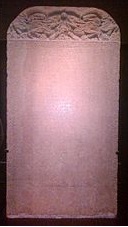
The Galle Trilingual Inscription is a stone tablet inscription in three languages, Chinese, Tamil and Persian, that was erected in 1409 in Galle, Sri Lanka to commemorate the second visit to the island by the Chinese admiral Zheng He. The text concerns offerings made by him and others to the Buddhist temple on Adams Peak, a Mountain in Sri Lanka, Allah (the Muslim term for God) and the god of the Tamil people, Tenavarai Nayanar. The admiral invoked the blessings of Hindu deities here for a peaceful world built on trade. The stele was discovered in Galle in 1911 and is now preserved in the Colombo National Museum.
On his third voyage, Zheng He sailed from China in 1409, and carried with him the trilingual tablet which he planned to erect in Sri Lanka. The date equates to 15 February 1409, indicating that it was inscribed in Nanjing before the fleet set out. The Chinese portion gives praise to Buddha and records lavish offerings in his honour.
The tablet was found by an engineer, S. H. Thomlin, in 1911 in Galle. It can now be seen in the national museum in Sri Lanka. A modern replica of the stele has been installed in the Treasure Boat Shipyard Park in Nanjing, along with copies of other steles associated with the voyages of Zheng He.
Here is a list of offerings deciphered from the tablet:
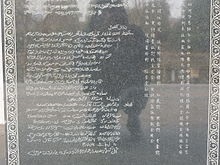
As seen in this modernized replica of the tablet, the inscription reads: 1,000 pieces of gold; 5,000 pieces of silver; 50 rolls of embroidered silk in many colours; 50 rolls of silk taffeta, in many colours; 4 pairs of jewelled banners, gold embroidered and of variegated silk, 2 pairs of the same picked in red, one pair of the same in yellow, one pair in black; 5 antique brass incense burners; 5 pairs of antique brass flower vases picked in gold on lacquer, with gold stands; 5 yellow brass lamps picked in gold on lacquer with gold stands; 5 incense vessels in vermilion red, gold picked on lacquer, with gold stands; 6 pairs of golden lotus flowers; 2,500 catties of scented oil; 10 pairs of wax candles; 10 sticks of fragrant incense. |
I initially found a reference to the Galle transcription in a book containing a collection of writings about historical events: Page 212, The Epic of Man, a collection of readings, Edited by L.S. Stavrianos, ©1971 by Prentice-Hall, Inc., Englewood Cliffs, N.J., 13-283325-5, Library of Congress catalog card number: 77-159452.
"In 1911 a stele with an inscription in three languages (Chinese, Tamil and Persian) was unearthed by road engineers within the town of Galle. This act commemorated, as was soon clear, one of the visits of the Ming navy under Cheng Ho, and took the form of an address accompanying religious gifts. Owing to differential weathering, the Chinese version was the first to be deciphered. It says that the Chinese Emperor, having heard of the fame of the Buddhist temples of Ceylon, such as the Temple of the Tooth relic, sent envoys to present a number of rich gifts— its date was + 1409. When the Tamil version was deciphered and translated later on, it turned out to say that the Chinese Emperor, having heard of the fame of the god Devundara Deviyo, caused the stone to be set up in his praise. Still more remarkable, the Persian version, the most damaged of the three, was found to say that the presentation was to the glory of Allah and some of his (Muslim) saints. But while the texts are thus different, they all agree in one thing— the lists of the presents is almost identical. There is thus hardly any escape from the conclusion that three parallel sets of gifts were brought out by sea and handed over to the representatives of the three most important religions practiced on the island. Such humanistic catholicity contrasts indeed with the autos-da fe of Goa later on."
(And yet let us of today recognize that even when the same language is used in three different contexts such as television, radio and newspapers/magazines... as well as word-of-mouth, we find that decipherment and translation are just as different as if three different languages were being used.)
What would possess ancient cultures to put three different languages side-by-side just as we of today put different languages on the same instruction manuals? Not only might we assume there were at least three dominant languages, but that there were numerous people who could read... or, why not use multiple "pictures" instead like countries using pictures instead of words to display direction, gender for toilets, etc.? Maybe there wasn't as much illiteracy as we of the present are inclined to think.. unless the written texts were for a select group of people whose ability or inability to read correctly determined what they told to others? But why choose the quantity three? Weren't there other languages? Did there exist a religious Trinity, whether or not they had any concept of a Trinity, and each language was for each of the three different component god-head figures?
Yet, the scripts are not claiming to be written for any god or trinitarian-like precept... though the Rosetta stone is a record of a 196 B.C. decree by a council of priests in Memphis, Egypt and the Behistun Rock was the proclamations of Darius I (522 - 486 BC) about being "chosen" by the supreme god Ahuramazda to dethrone a usurper named Gaumata. Additionally, including this latter item with two others associated with it, we have a list of three completed tasks:
- Dethrone an usurper named Gaumata.
- Quell several rebellious revolts.
- Defeated his foreign enemies.
Because the usage of three languages are not explicitly claimed as being for a "Trinity", we might well discount this idea as the reason for using three languages.
Again I ask, why use three languages? Was the existence of the Behistun rock known by those in compiling or sanctioning the Rosetta stone though it occurred some 250+ years prior? Is it a form of copycat activity? Is the occurrence of a three- language usage merely coincidental? Were there other three-language inscriptions made, whether still hidden away, buried, or destroyed by humans or weathering? And what does this have to do with a New Instrument of Threes?
In a cursory attempt to answer whether or not there are other similar "three-language" accounts amongst ancient "texts", I came to find out that a simplified search using the terms rock or stone (variously intermixed with "three, and languages"), yielded nothing. While I used shorter and larger queries, thinking this might prove fruitful, I still came up with nothing in the search engines I tried. I did not use such terms as inscription, relief, monument, or engraving. Denoting such, it is of need to point out that discussions read about the Rosetta stone do not yield information about the Behistun rock. In other words, our usage of language becomes a stumbling block to uncovering examples of the same thing.
This is the same problem encountered when researching for examples of "threes". A topic may never mention the word "three", even though the content is about three different items. Sometimes you have to be explicit, and sometimes you have to generalize. If an article doesn't use any word equivalent to a "three" reference, (for example, trinity, triad, triangle, triple, etc.), you may have to actively search for three items. This is not to say you will find any, but you must keep this in mind. Also, whereas sometimes you may be looking for a specific type of three reference, only to overlook another one staring you in the face. Because different people search in different ways, anyone can be fruitful. They should not be discouraged in their search if an example that they "discover" has already been listed. They must appreciate it as a discovery for their own list of threes. Each person supports the other person's findings.
Aside from all my references and allusions towards not only a misapprehension definition and types of analysis used in the topic of "threes" research, this page explicitly directs the reader's attention to the usage of language. An analysis of the language we are using for analysis of a given topic also requires an analysis of language usage such as in grammar, sentence and paragraph construction, and the development of language itself. Necessarily so, this entails an analysis of hearing and the auditory process. It is of some interest to note and provide a list of the numerous "threes" occurring with some elements of language most people do not typically associate with one another, even if they have come across one or several of the examples out of a "threes" context. The following link provides such a listing:
To appreciate the efforts at attempting to outline a new way of thinking about the "threes phenomena", this might well necessitate a grasp of language as a physiological process, in as much as we think the type of language(s) used is impressed upon us by the kind of culture we are exposed to. (It may also be profitable to view multi-lingualism as a type of language itself.) If physiological processes have an identifiable "three" form, which they do; are such "three" identifications a representation of an actual three-based structure, or is such an organizational methodology an artifact of a culture that uses multiple "three" references, and some of us (for whatever reason-s) are particularly susceptible at being impressed upon to mimic such a usage?
Language usage, be it words, numbers or that conveyed along some symbolic channel such as music, art, silence or emotion, can make us see much more clearly or turn us into someone that is blind and groping about the world trying to interpret perceptions with previously established ideas. The following poem can be used to illustrate the point:
(by John Godfrey Saxe)
American poet John Godfrey Saxe (1816-1887) based this poem, "The Blind Men and the Elephant", on a fable that was told in India many years ago. It is a good warning about how our sensory perceptions can lead to misinterpretations... And how people can see the same thing in a completely different way...
 |
It was six men of Indostan To learning much inclined, Who went to see the Elephant (Though all of them were blind), That each by observation Might satisfy his mind... |
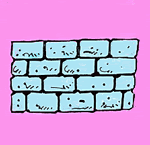 |
The First approached the Elephant, And happening to fall Against his broad and sturdy side, At once began to bawl: “God bless me! but the Elephant Is very like a wall!” |
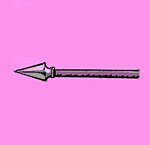 |
The Second, feeling of the tusk, Cried, “Ho! what have we here So very round and smooth and sharp? To me ’tis mighty clear This wonder of an Elephant Is very like a spear!” |
 |
The Third approached the animal, And happening to take The squirming trunk within his hands, Thus boldly up and spake: “I see,” quoth he, “the Elephant Is very like a snake!” |
 |
The Fourth reached out an eager hand, And felt about the knee. “What most this wondrous beast is like Is mighty plain,” quoth he; “ ‘Tis clear enough the Elephant Is very like a tree!” |
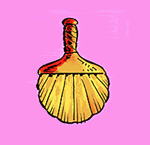 |
The Fifth, who chanced to touch the ear, Said: “E’en the blindest man Can tell what this resembles most; Deny the fact who can This marvel of an Elephant Is very like a fan!” |
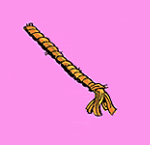 |
The Sixth no sooner had begun About the beast to grope, Than, seizing on the swinging tail That fell within his scope, “I see,” quoth he, “the Elephant Is very like a rope!” |
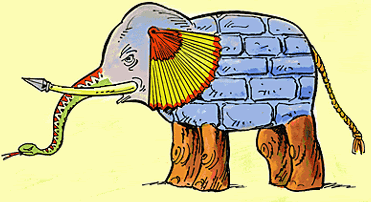 |
And so these men of Indostan Disputed loud and long, Each in his own opinion Exceeding stiff and strong, Though each was partly in the right, And all were in the wrong! |
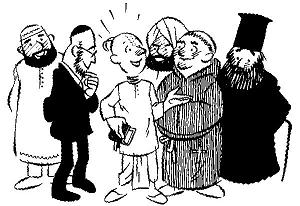 |
Moral: So oft in theologic wars, The disputants, I ween, Rail on in utter ignorance Of what each other mean, And prate about an Elephant Not one of them has seen! |
Information sources:
Official Ukraine.com Website
(Posted by: Lisaparx)
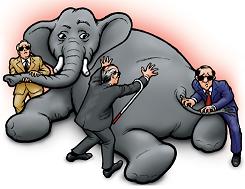
For me, the above poem also speaks of the Empirical method being used by the three characters in the image to the right that I define as representing the present business, government and religious institutions, even though they might say it is "the other guy" who is the bind man (or woman). And it should be noted, that even though the poem clearly denotes six blind men, only three are frequently referenced in some accounts. However, I have also encountered different quantities such as four, five, and seven... though others might well exist and I've not come across them. But it has not escaped me that with all this talk of blindness, some readers remain in the dark, in a fog, in a cavern about the "New Way of Thinking" about threes as is being developed in the Novum Organum Threesiarum. Let us thus move on.
HTML (4.01) update: Monday, June 10, 2019... 6:52 AM
Your Questions, Comments or Additional Information are welcomed:
Herb O. Buckland
herbobuckland@hotmail.com